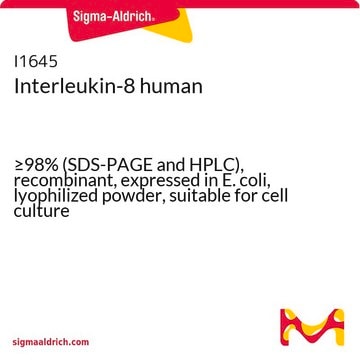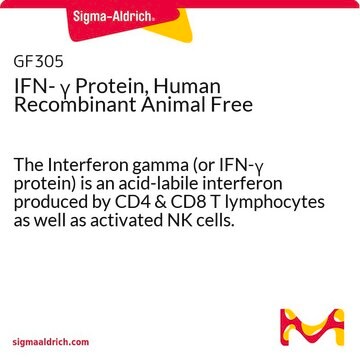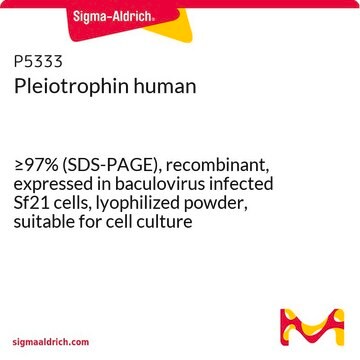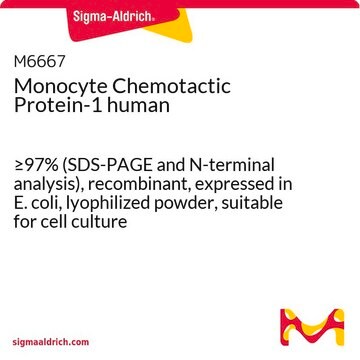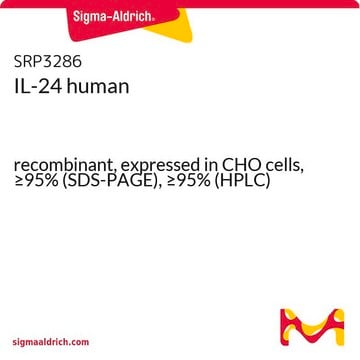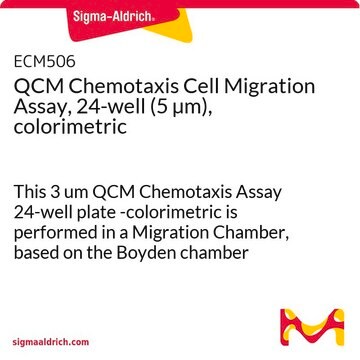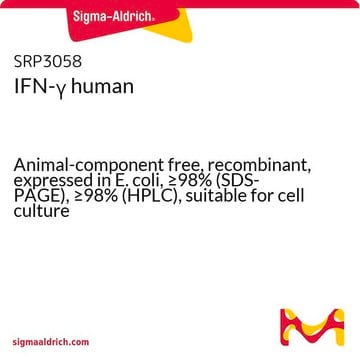SRP3109
MCP-1/MCAF human
Animal-component free, recombinant, expressed in E. coli, ≥98% (SDS-PAGE), ≥98% (HPLC), suitable for cell culture
Sinónimos:
CCL2, MCAF, Monocyte Chemotactic Protein-1
About This Item
Productos recomendados
origen biológico
human
recombinante
expressed in E. coli
Ensayo
≥98% (HPLC)
≥98% (SDS-PAGE)
Formulario
lyophilized
mol peso
8.6 kDa
envase
pkg of 20 μg
técnicas
cell culture | mammalian: suitable
impurezas
<0.1 EU/μg endotoxin, tested
color
white to off-white
Nº de acceso UniProt
Condiciones de envío
wet ice
temp. de almacenamiento
−20°C
Información sobre el gen
human ... CCL2(6347)
Descripción general
Aplicación
- as a chemokine supplement in the alpha minimal essential medium for culturing neurons to test its effect on JmjC histone demethylase (Jmjd2a) mRNA
- as a component of Dulbecco′s Modified Eagle (DMEM) medium, as a positive chemoattractant control in HeLa cells for migration assay
- as a chemoattractant to induced macrophage chemotaxis
Acciones bioquímicas o fisiológicas
Secuencia
Forma física
Reconstitución
Código de clase de almacenamiento
11 - Combustible Solids
Clase de riesgo para el agua (WGK)
WGK 3
Punto de inflamabilidad (°F)
Not applicable
Punto de inflamabilidad (°C)
Not applicable
Elija entre una de las versiones más recientes:
Certificados de análisis (COA)
¿No ve la versión correcta?
Si necesita una versión concreta, puede buscar un certificado específico por el número de lote.
¿Ya tiene este producto?
Encuentre la documentación para los productos que ha comprado recientemente en la Biblioteca de documentos.
Nuestro equipo de científicos tiene experiencia en todas las áreas de investigación: Ciencias de la vida, Ciencia de los materiales, Síntesis química, Cromatografía, Analítica y muchas otras.
Póngase en contacto con el Servicio técnico